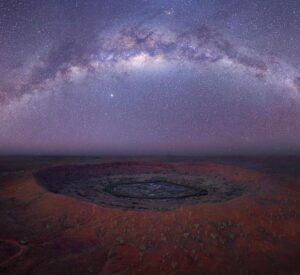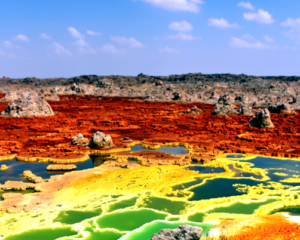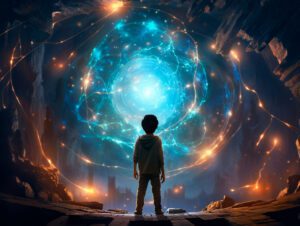A black hole isn’t just an empty space in the universe—it’s one of the most mind-bending phenomena out there. It’s a region where gravity is so intense that not even light can escape its pull. Everything within a certain boundary, called the event horizon, gets sucked in and stretched into nothingness. It’s like the universe’s ultimate trapdoor.
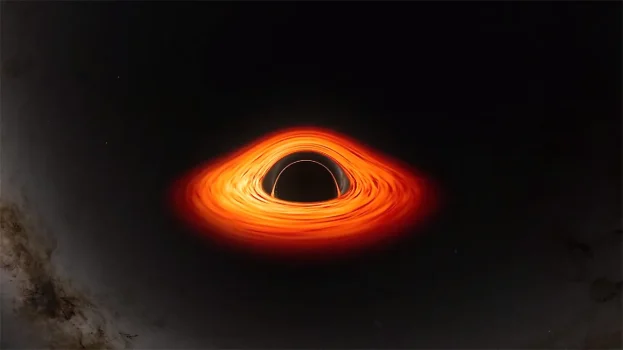 Pin
Pin Photo by NASA
But it’s not just a monster devouring everything around it. Black holes actually play a significant role in the cosmic ecosystem, impacting star formation and galactic behavior. Even though we can’t directly see a black hole (since light can’t escape), the way they influence their surroundings makes their presence impossible to ignore.
When scientists first theorized black holes, they seemed like something out of a sci-fi movie. But thanks to NASA and other space agencies, we’ve not only confirmed their existence but also managed to capture stunning real images that give us a peek into their terrifying beauty.
Table of Contents
The M87 Black Hole
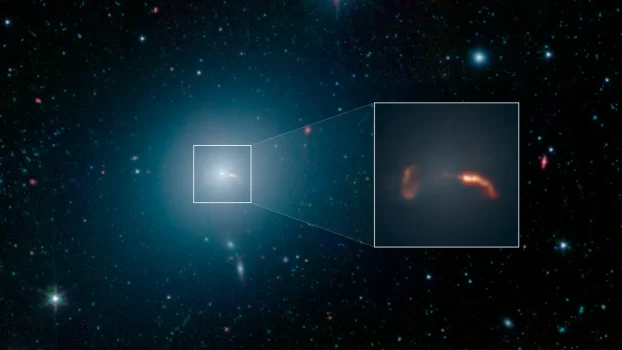 Pin
Pin Photo by NASA/JPL-Caltech/IPAC
The image of the M87 black hole captured in 2019 was a game-changer for humanity’s understanding of the cosmos. It was the first-ever direct image of a black hole, and it looked like something straight out of a cosmic nightmare—a glowing orange ring surrounding an eerie dark shadow.
This black hole resides at the center of the Messier 87 galaxy, about 55 million light-years away from Earth. To capture this image, scientists used the Event Horizon Telescope (EHT), a global network of radio telescopes working together like a planet-sized camera. The technical achievement was staggering, but the emotional impact was even greater.
For years, black holes were invisible monsters we could only imagine. Now we had proof, a visual confirmation of one of the universe’s most mysterious entities. Looking at that image was like staring into a portal of nothingness, reminding us just how small we are in the grand scheme of things.
Sagittarius A*
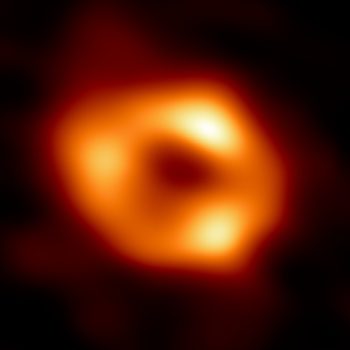 Pin
Pin Photo by NASA
Sagittarius A*, the black hole sitting at the center of our Milky Way, is a cosmic beast hiding in plain sight. For years, astronomers knew something strange was happening there because stars were moving around as if being tugged by an invisible force. That force turned out to be a supermassive black hole, four million times the mass of our Sun.
In May 2022, NASA and the Event Horizon Telescope team revealed the first-ever image of Sagittarius A*. Unlike M87, this image showed a blurry orange halo surrounding a dark core. It wasn’t as sharp as we might’ve hoped, but considering it’s 27,000 light-years away, it was still mind-blowing.
This black hole might not be as active or violent as M87’s, but it’s home. That makes it special. When you look at the image of Sagittarius A*, you’re looking at the heart of our galaxy—a place that’s shaped the Milky Way for billions of years and continues to hold its secrets close.
Centaurus A Black Hole
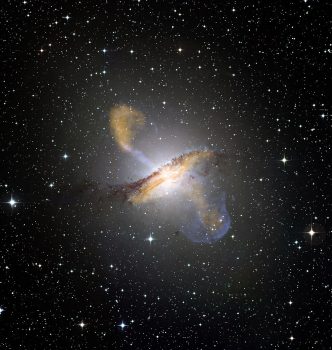 Pin
Pin Photo by NASA
Centaurus A is home to one of the most fascinating and aggressive black holes we’ve ever observed. Sitting about 12 million light-years away, it doesn’t just quietly pull in matter—it shoots out massive jets of energy stretching thousands of light-years into space. These jets are made up of charged particles moving at nearly the speed of light, creating a cosmic spectacle.
What makes this black hole visually stunning is the combination of chaos and elegance. NASA’s images show swirling patterns of light and energy, revealing just how dynamic and powerful this region is. The sheer violence of the process is hard to comprehend—stars, gas, and dust all being torn apart and either swallowed or flung back into space.
Centaurus A’s black hole is a reminder that black holes aren’t just empty voids. They’re creators as much as destroyers, shaping their surrounding galaxies in ways we’re only beginning to understand. It’s a breathtaking cosmic dance that’s equal parts terrifying and beautiful.
The Black Hole in Galaxy NGC 4258
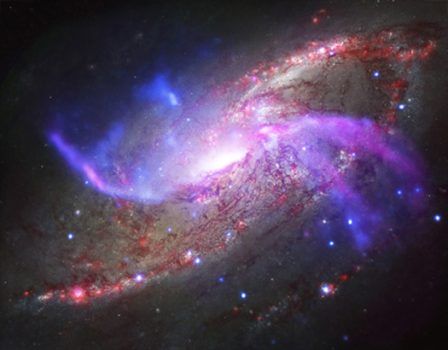 Pin
Pin Photo by NASA
NGC 4258, also known as Messier 106, hosts a black hole with a mind-blowing feature—warped, spiral-shaped jets of gas orbiting it like a cosmic whirlpool. Located about 23 million light-years from Earth, this galaxy has fascinated scientists because of the unusual disk of superheated gas circling its central black hole.
NASA’s images of this region reveal stunning swirls of colors, hinting at the intense gravitational forces at work. What makes this black hole especially interesting is how it’s disrupting its galaxy, pushing surrounding matter into strange, unexpected shapes. Imagine the chaotic beauty of a hurricane but on a galactic scale.
This isn’t just a static image; it’s evidence of constant motion and transformation. The black hole is actively sculpting the galaxy around it, proving that these celestial giants aren’t just cosmic trash compactors but dynamic forces that shape the universe. The swirling jets in NGC 4258 remind us that black holes are creators of beauty in their own strange way.
Cygnus X-1, One of the First Black Hole Discoveries
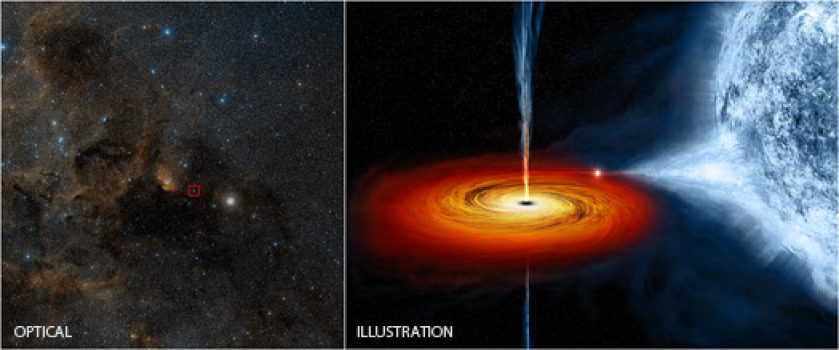 Pin
Pin Photo by NASA
Cygnus X-1 is a stellar-mass black hole that holds a special place in space exploration history. Located about 6,000 light-years from Earth, it was one of the first black hole candidates ever discovered. What makes Cygnus X-1 fascinating isn’t just its history but how it reveals itself through X-ray emissions.
Unlike supermassive black holes at the centers of galaxies, Cygnus X-1 formed from the collapse of a massive star. NASA’s observations showed that this black hole is in a binary system, tightly orbiting a blue supergiant star. As it pulls in material from its companion, it emits intense X-rays that scientists can detect here on Earth.
Looking at NASA’s data visualizations, Cygnus X-1 feels like a cosmic predator lurking in the darkness. You can’t see it directly, but its powerful gravitational grip leaves no doubt that it’s there. It’s a reminder that black holes come in different sizes but are equally relentless in their cosmic influence.
TON 618, a Monster Beyond Comprehension
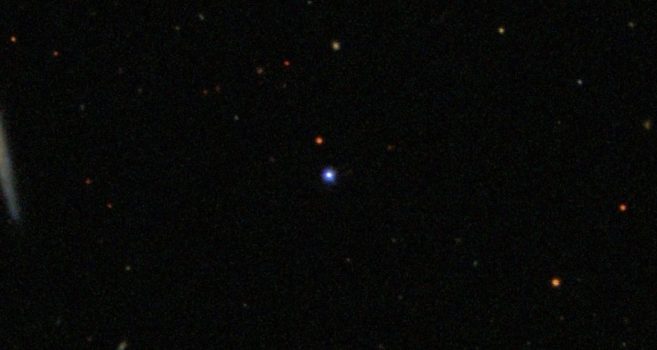 Pin
Pin Imaged by the Sloan Digital Sky Survey Data Release 9 (DR9)
If you thought black holes were already terrifying, meet TON 618—a black hole so massive it defies imagination. It’s classified as an ultramassive black hole, with an estimated mass of 66 billion times that of our Sun. Yes, billion. Located over 10 billion light-years away, it’s one of the heaviest known objects in the universe.
What makes TON 618 even more remarkable is the blazing quasar surrounding it. As it devours matter, it emits a blinding light brighter than entire galaxies. Despite being unimaginably distant, this quasar is visible because of the sheer amount of energy radiating from the black hole’s accretion disk.
Looking at NASA’s renderings and observations, it’s hard to wrap your head around something that large and powerful existing. TON 618 feels less like a part of the universe and more like a cosmic anomaly, a reminder that there are forces in the universe far beyond human understanding.
Abell 1201’s Gravitational Lens
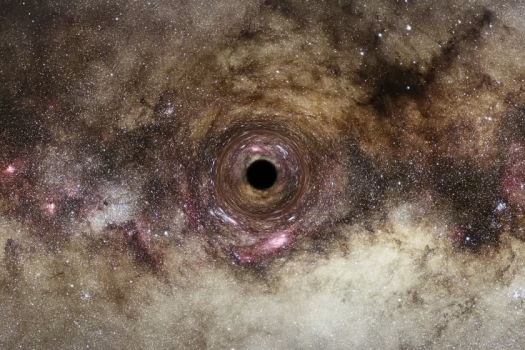 Pin
Pin Abell 1201 is a galaxy cluster home to one of the most fascinating black hole phenomena ever observed—a gravitational lens caused by the massive black hole at its center. This isn’t just a static image; it’s a visual distortion of light from galaxies far behind it, warped and stretched by the immense gravity of the black hole.
What makes this so eerie is how it messes with your perception. NASA’s observations show bright arcs of light bending around an invisible force, almost like nature playing tricks on us. This cosmic lensing proves the unimaginable strength of black holes—they can even warp the very fabric of space-time itself.
Abell 1201 feels like the universe showing off its ability to manipulate reality. It’s humbling and unsettling at the same time. Black holes aren’t just destructive forces but architects of the cosmos, bending light and time itself to their will. It’s proof that the universe operates on a level far beyond human comprehension.
The Black Hole in NGC 4438
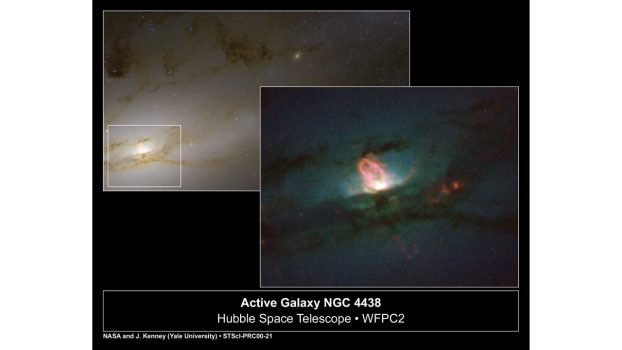 Pin
Pin Photo by NASA
NGC 4438, part of the Virgo Cluster, is a galaxy being torn apart by interactions with neighboring galaxies—and at its heart lies a stealthy black hole. Unlike the blazing quasars surrounding some black holes, this one hides in shadows, detectable only by its gravitational influence on nearby stars and gas clouds.
What makes NGC 4438 fascinating is the sheer chaos surrounding it. NASA’s images reveal twisted gas streams and warped galactic arms, clear signs of violent gravitational forces at play. This black hole isn’t flashy, but it’s powerful, subtly reshaping its host galaxy while remaining nearly invisible.
The black hole in NGC 4438 reminds us that some of the universe’s most powerful forces operate in silence. They don’t announce themselves with bright jets of energy or fiery disks. Instead, they quietly pull everything toward them, reshaping the cosmos in ways we’re just beginning to understand.
Why Black Holes Inspire Awe and Fear
Black holes are more than just astronomical phenomena—they’re symbols of the universe’s raw, untamed power. From NASA’s groundbreaking images to scientific discoveries, they challenge our understanding of physics, space, and even time itself. What makes them so captivating is their duality: they’re both destroyers and creators, chaos and order rolled into one.
Looking at these images, you can’t help but feel small. Black holes remind us of how fragile and fleeting life is compared to the ancient, incomprehensible forces shaping the universe. Yet, there’s also a strange beauty in their existence. They show us that even in the darkness, there is wonder—forces that push the boundaries of science and human imagination.
Perhaps that’s why black holes resonate so deeply. They force us to confront the mysteries of existence, sparking curiosity and awe. And thanks to NASA, we can now look into these cosmic abysses and marvel at the breathtaking reality of our universe.
















